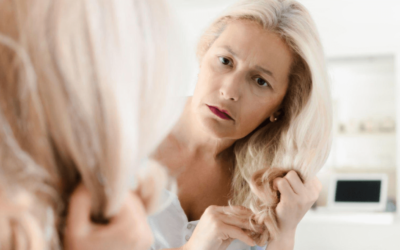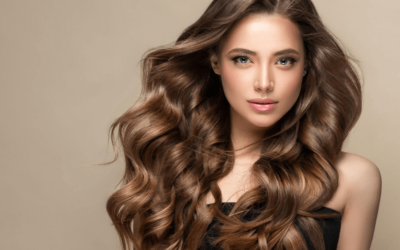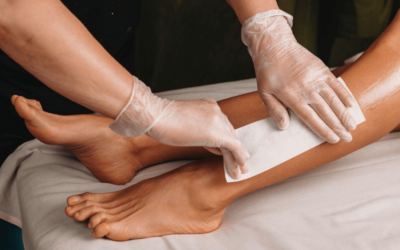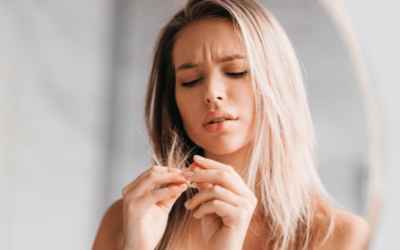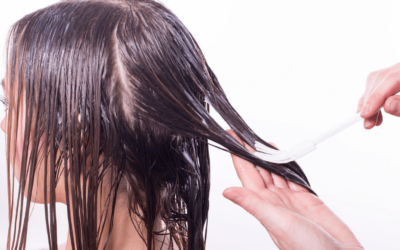Explain the common problem of brassy hair, characterized by unwanted warm or orange tones in color-treated hair. Highlight the frustration it can cause and the importance of understanding the underlying causes and effective solutions.
Engage readers by sharing relatable experiences and setting the tone for a helpful and informative guide.
Understanding Brassy Hair
Define brassy hair and its causes, such as oxidation, exposure to environmental factors, or improper color maintenance.
Discuss how certain hair colors, like blonde or gray, are more susceptible to brassiness. Explain the role of melanin and pigments in hair color and how they can affect the appearance of brassiness.
Identifying Brassiness
Describe the visual cues that indicate brassy hair, such as yellow, orange, or red tones in the hair. Provide tips on how to assess the severity of brassiness and determine the underlying cause.
Preventing Brassy Hair
Discuss preventive measures to minimize the risk of brassy hair, such as using color-protecting shampoos and conditioners, avoiding excessive heat styling, and protecting hair from UV rays.
Highlight the importance of regular salon visits for touch-ups and toning treatments.
Home Remedies for Brassy Hair
Introduce popular home remedies for toning brassy hair, including the use of purple shampoo, vinegar rinses, and DIY toning masks.
Provide detailed instructions on how to use each remedy effectively and caution against overuse or incorrect application.
Professional Solutions for Brassy Hair
Discuss professional treatments available at salons, such as toning treatments, color correction, and glossing services.
Emphasize the expertise of hairstylists in assessing and addressing specific brassiness issues.
Color Correction Techniques
Explore color correction techniques, such as using complementary colors to neutralize brassiness (e.g., purple to counteract yellow tones), and explain the underlying color theory.
Caution readers about the complexity of color correction and recommend consulting a professional colorist for major color adjustments.
Maintaining Toned Hair
Provide tips and tricks for maintaining toned hair over time, such as using color-protecting products, limiting sun exposure, and scheduling regular salon visits for touch-ups.
Recommend incorporating purple or blue toning products into the hair care routine to prevent future brassiness.
Common Mistakes to Avoid
Highlight common mistakes people make when attempting to fix brassy hair, such as over-processing, using improper toning products, or neglecting proper hair care practices.
Explain the negative consequences of these mistakes and offer guidance on how to avoid them.
The Role of Water Quality: Discuss the impact of water quality on hair brassiness. Explain how minerals and chemicals in the water, such as chlorine and hard water, can contribute to brassiness and suggest using filtered or bottled water for hair rinsing.
The Importance of Hair Porosity: Explore how hair porosity affects its susceptibility to brassiness. Discuss the different porosity levels (low, medium, high) and provide tips on how to determine hair porosity at home.
Suggest tailored approaches to brassiness prevention and treatment based on porosity.
Heat Styling and Brassiness: Explain how excessive heat styling can exacerbate brassiness. Discuss the potential damage caused by heat tools and recommend heat protectant products to minimize the risk of color fading and unwanted tones.
Protective Hairstyles: Introduce protective hairstyles as a way to shield the hair from environmental factors that contribute to brassiness.
Provide examples of suitable protective styles, such as braids, buns, and updos, that can help preserve hair color and minimize exposure to the elements.
Professional Consultation: Emphasize the importance of consulting with a professional hairstylist or colorist for personalized advice.
Discuss the benefits of a professional assessment of hair condition, color formulation, and targeted treatments for brassy hair.
Toning Products for Different Hair Colors: Provide specific recommendations for toning products based on different hair colors.
Discuss the best toners for blonde, brunette, and red hair to counteract specific brassiness issues commonly associated with each color.
Lifestyle Changes for Brassiness Prevention: Highlight lifestyle factors that can contribute to hair brassiness, such as smoking, excessive sun exposure, and certain medications.
Encourage readers to make informed choices and modify their lifestyle habits to support healthy, vibrant hair.
Color Maintenance Techniques: Discuss tips and techniques for extending the life of hair color and preventing brassiness between salon visits.
Topics to cover may include using color-depositing conditioners, avoiding sulfates in hair products, and minimizing exposure to chlorine and saltwater.
DIY Toning Recipes: Share DIY toning recipes using natural ingredients to help neutralize brassiness.
Include step-by-step instructions and emphasize the importance of patch testing and caution when using homemade remedies.
Haircare Products for Brassiness: Provide a curated list of haircare products specifically formulated to address brassiness. Include shampoos, conditioners, hair masks, and leave-in treatments that help maintain color vibrancy and neutralize unwanted tones.
Remember to continuously optimize the content with relevant headers, subheadings, and appropriate formatting to enhance readability and improve search engine visibility.
Conclusion
Recap the main points discussed in the article and emphasize the importance of a personalized approach to fixing brassy hair.
Encourage readers to experiment with different solutions while being mindful of their hair’s condition and seeking professional advice when needed.







